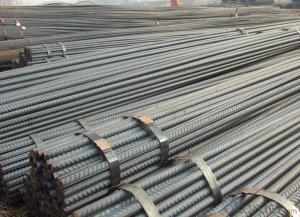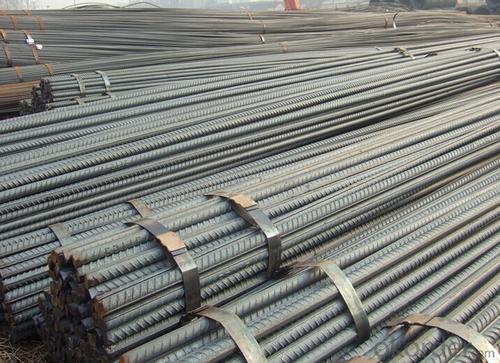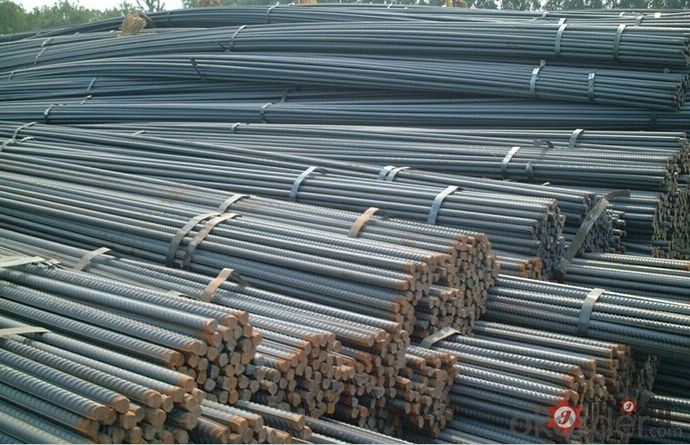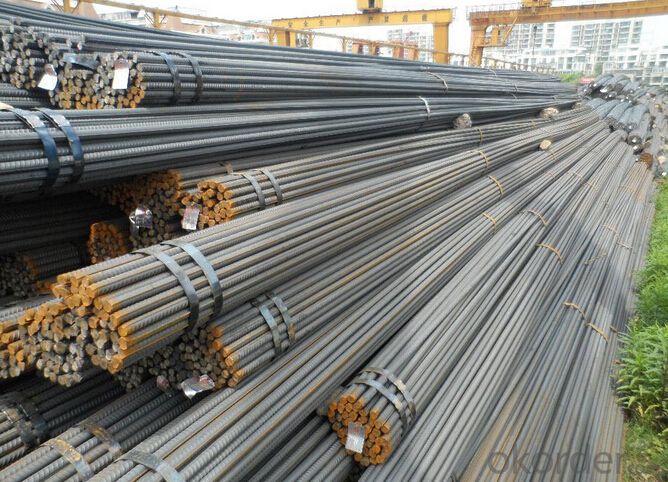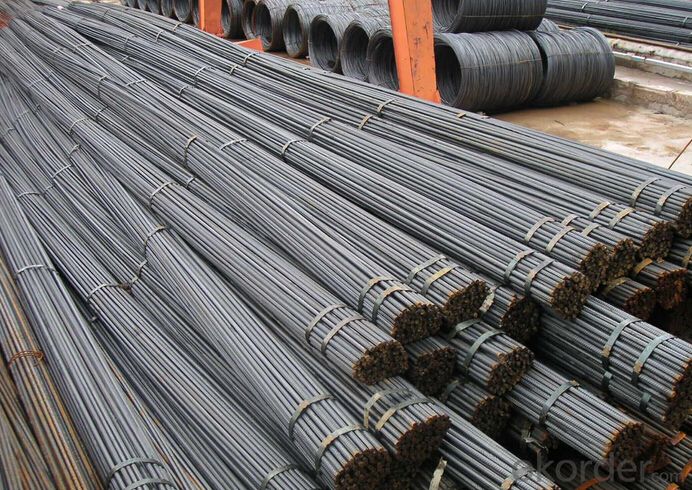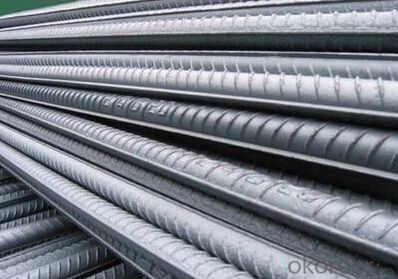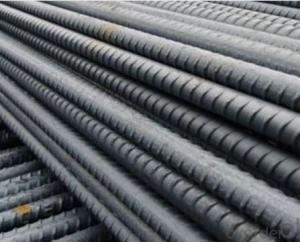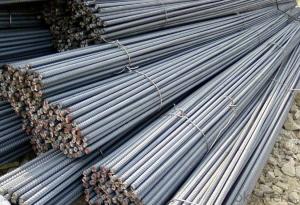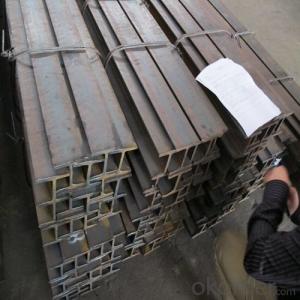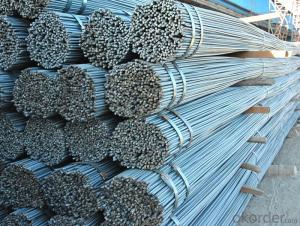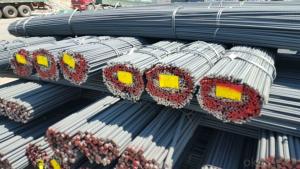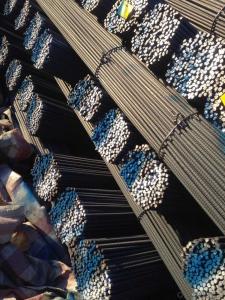Saudi Jeddah Makka Madina Steel Rebars Different Sizes
- Loading Port:
- Tianjin
- Payment Terms:
- TT OR LC
- Min Order Qty:
- 100 m.t.
- Supply Capability:
- 10000 m.t./month
OKorder Service Pledge
Quality Product, Order Online Tracking, Timely Delivery
OKorder Financial Service
Credit Rating, Credit Services, Credit Purchasing
You Might Also Like
Specification
Standard:
ASTM,AISI,JIS,API,EN,DIN,BS,GB
Technique:
Hot Rolled,Cold Rolled,Cold Drawn,ERW,Forged,Saw,Extruded,EFW,Spring
Shape:
U Channel,Square,C Channel,Hexagonal,Round,Rectangular,Oval,LTZ
Surface Treatment:
Galvanized,Coated,Copper Coated,Color Coated,Oiled,Dry,Polished,Bright,Black,PVDF Coated,Chromed Passivation
Steel Grade:
Q195,Q215,Q235,Q215B,Q235B,RHB335,HRB400,200 Series,300 Series,400 Series,600 Series,SS400-SS490,10#,20#,A53(A,B)
Certification:
ISO,SGS,BV,IBR,RoHS,CE,API,BSI,UL
Thickness:
8-32
Length:
12
Net Weight:
10
Saudi Jeddah Makka Madina Steel Rebars Different Sizes
Details of the Saudi Jeddah Makka Madina Steel Rebars Different Sizes
| Standard & Grade: | GB1499-98 : HRB335,HRB400,HRB500 |
| BS4449-1997 : GR460,GR500 | |
| CAN/CSA-G30.18-M92 : 400W | |
| ASTM A615 : Gr.40, Gr.60 | |
| Diameter: | 6mm;8mm;10mm;12mm;14mm;16mm;18mm;20mm;22mm;25mm;28mm;30mm;32mm;35mm;40mm |
| Length: | 6m,9m,12m |
| Packing: | Bundle packing |
| Origin: | China |
| Application: | Construction,Road,Machinery processing,Welding fields. |
| Delivery time: | 10-25 days |
| Shipment: | By bulk vessel or Container |
| Documents: | Mill Test Certificate,Commercial Invoice,Packing List,Certificate of Origin |
Company Introduction of the Saudi Jeddah Makka Madina Steel Rebars Different Sizes
CNBM International Corporation is the most import and export platform of CNBM group(China National Building Material Group Corporation) ,which is a state-owned enterprise, ranked in 270th of Fortune Global 500 in 2015.
With its advantages, CNBM International are mainly concentrate on Cement, Glass, Iron and Steel, Ceramics industries and devotes herself for supplying high quality series of refractories as well as technical consultancies and logistics solution.

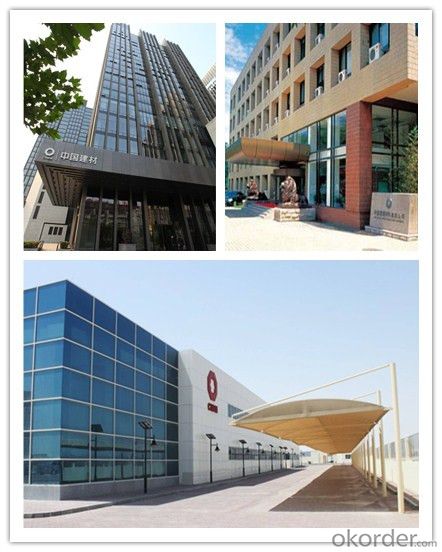
Packaging & Delivery of the Saudi Jeddah Makka Madina Steel Rebars Different Sizes
| Packaging Detail | Sea worthy packing /as per customer's packing instruction |
| Delivery Detail | 15 ~ 40 days after receiving the deposit |
FAQ
| Are you a trading company or manufacturer? | Manufacturer |
| What’s the MOQ? | 1000m2 |
| What’s your delivery time? | 15-20 days after downpayment received |
| Do you Accept OEM service? | Yes |
| what’s your delivery terms? | FOB/CFR/CIF |
| What's the Payment Terms? | 30% as deposit,70% before shipment by T/T |
| Western Union acceptable for small amount. | |
| L/C acceptable for large amount. | |
| Scrow ,Paybal,Alipay are also ok | |
| Why choose us? | Chose happens because of quality, then price, We can give you both. Additionally, we can also offer professional products inquiry, products knowledge train (for agents), smooth goods delivery, excellent customer solution proposals. |
| What's your available port of Shipment? | Main Port, China |
| What’s your featured services? | Our service formula: good quality+ good price+ good service=customer's trust |
| Where are your Market? | Covering more than 160 countries in the world |
- Q: How do steel rebars affect the overall structural stability during construction?
- Steel rebars play a crucial role in enhancing the overall structural stability during construction. These reinforcement bars are typically embedded within concrete structures to provide additional strength and support. They help to distribute the load evenly across the entire structure, minimizing the risk of failure and increasing the overall stability. One of the main benefits of using steel rebars is their high tensile strength. Concrete is strong in compression but weak in tension, and steel rebars help to compensate for this weakness by resisting tensile forces. By reinforcing the concrete with steel rebars, the structure becomes more resistant to cracking and deformation, ensuring its durability and longevity. Moreover, steel rebars improve the ductility of the structure. Ductility refers to the ability of a material to undergo deformation without breaking or fracturing. During an earthquake or other external forces, the steel rebars allow the structure to flex and absorb energy, reducing the risk of catastrophic failure. This enhances the overall stability and safety of the construction. Additionally, steel rebars enhance the structural integrity of the construction by preventing the propagation of cracks. When cracks occur in the concrete, the steel rebars provide a pathway for stress transfer, preventing the cracks from spreading and compromising the overall stability of the structure. Furthermore, steel rebars contribute to the structural stability by reinforcing critical areas of the construction, such as columns, beams, and slabs. These elements are subjected to significant loads and stresses, and the presence of steel rebars ensures their ability to withstand these forces, preventing collapse or structural failure. In summary, steel rebars greatly affect the overall structural stability during construction. They enhance the tensile strength of concrete, improve ductility, prevent crack propagation, and reinforce critical areas of the structure. Their incorporation ensures that the construction can withstand various loads, external forces, and environmental conditions, providing a robust and stable building that meets safety standards and regulations.
- Q: What are the guidelines for the proper installation of steel rebars?
- The proper installation of steel rebars is crucial for ensuring the structural integrity and durability of reinforced concrete structures. Here are some guidelines to follow for their proper installation: 1. Planning and Design: Before beginning the installation, it is important to have a detailed plan and design in place. This includes determining the required rebar size, spacing, and configuration based on the structural requirements and specifications. Consulting structural engineers and adhering to local building codes and regulations is essential. 2. Cutting and Bending: Rebars should be cut and bent accurately according to the design specifications. Proper tools such as rebar cutters and benders should be used to ensure clean cuts and precise bends. Any damaged or corroded rebars should be discarded and replaced. 3. Cleaning and Preparation: The surface of the rebars must be free from any contaminants like rust, oil, dirt, or loose scales before installation. Cleaning the rebars using wire brushes or air blasting is recommended to ensure proper adhesion between the rebar and concrete. 4. Placement and Positioning: The rebars should be placed and positioned accurately as per the design drawings. They should be securely tied or supported using tie wires or rebar chairs to maintain the desired spacing and alignment. Splices should be made in accordance with the design requirements and properly lapped to ensure continuity and strength. 5. Concrete Cover: The rebars should be adequately covered with concrete to protect them from corrosion and provide fire resistance. The concrete cover thickness should meet the design specifications and local building codes. Proper spacing between rebars and formwork should be maintained to allow proper concrete flow and consolidation. 6. Anchorage and Embedment: Adequate anchorage and embedment of rebars are essential for transferring loads and ensuring structural stability. Special care should be taken to provide proper hooks, bends, or mechanical anchorage at the ends of rebars as per the design requirements. The rebars should be properly embedded into the adjacent concrete elements to achieve the desired bond strength. 7. Inspection and Quality Control: Regular inspection should be carried out during the installation process to ensure compliance with the design specifications and quality standards. Any deviations or defects should be identified and rectified promptly. It is important to document the installation process and maintain proper records for future reference. By following these guidelines, the proper installation of steel rebars can be achieved, ensuring the structural strength, longevity, and safety of reinforced concrete structures.
- Q: Can steel rebars be used in structures with limited maintenance access?
- Yes, steel rebars can be used in structures with limited maintenance access. Steel rebars are commonly used in construction projects because of their durability and strength. They are able to withstand heavy loads and provide reinforcement to concrete structures. In structures with limited maintenance access, steel rebars offer several advantages. Firstly, they have a long lifespan and are resistant to corrosion, which reduces the need for frequent maintenance. Unlike other materials, such as wood or aluminum, steel rebars do not decay or rot over time, making them suitable for structures that are difficult to access for regular maintenance. Additionally, steel rebars can be easily inspected using non-destructive testing methods such as ultrasound or magnetic particle inspection. These techniques can detect any potential defects or damage in the rebars without the need for invasive measures, thus ensuring the structural integrity of the building. Furthermore, steel rebars can be designed and installed in a way that minimizes the need for future maintenance. For example, the use of epoxy-coated rebars can provide an extra layer of protection against corrosion, extending the lifespan of the structure and reducing the need for maintenance. However, it is important to note that although steel rebars are highly durable, they are not completely maintenance-free. Over time, the protective coatings on the rebars may deteriorate, and if not addressed, corrosion can occur. Therefore, periodic inspections and maintenance activities should still be conducted, even in structures with limited access. In conclusion, steel rebars can be used in structures with limited maintenance access due to their durability, resistance to corrosion, and the ability to be inspected without invasive measures. However, regular inspections and maintenance are still necessary to ensure the long-term performance of the rebars and the overall structural integrity of the building.
- Q: Can steel rebars be galvanized for added protection?
- Yes, steel rebars can be galvanized for added protection. Galvanizing involves coating the rebars with a layer of zinc, which provides a protective barrier against corrosion and extends their lifespan.
- Q: How do steel rebars contribute to the fire resistance of a building?
- Steel rebars contribute to the fire resistance of a building by providing structural integrity and stability. In the event of a fire, the steel rebars help prevent the collapse of the building by maintaining the structural strength of the concrete components. The high melting point of steel also slows down the spread of fire, allowing occupants more time to evacuate and firefighters more time to control the blaze. Additionally, when exposed to high temperatures, steel rebars form a protective layer of oxide that insulates the surrounding concrete, further delaying the effects of fire.
- Q: What is the difference between the actual weight and the actual weight of the steel thread?
- Is the difference between the work and the theory of weight. General steel factory, have weight difference, unlike canned beverage, not so accurate, this is called "bad" or "inferior". But the mills are not stupid, only under the poor, is not Quejinshaoliang, with a significant difference (such as standard 100KG, he will give you a 110KG).
- Q: Can steel rebars be recycled after the demolition of a structure?
- After a structure is demolished, steel rebars can indeed be recycled. In fact, steel is widely recycled around the globe, and rebars are no exception to this trend. Typically, during the demolition process, rebars are separated from other materials like concrete and extracted from the structure. Subsequently, these rebars are gathered and transported to a recycling facility for further processing and melting. The molten steel can then be utilized to produce new rebars or other steel goods, thus decreasing the need for fresh steel production and preserving precious resources. By recycling rebars, not only do we help reduce waste and minimize environmental impact, but we also actively contribute to the circular economy by promoting material reuse.
- Q: How do steel rebars affect the overall construction cost of residential buildings?
- Steel rebars can significantly impact the overall construction cost of residential buildings. While rebars add strength and durability to the structure, they also contribute to increased material and labor expenses. The cost of purchasing and installing rebars, along with associated construction techniques and reinforcing requirements, can raise the overall construction cost. However, considering the long-term benefits of reinforced structures, the investment in steel rebars is justified as it enhances the safety and longevity of residential buildings.
- Q: Can steel rebars be used in structures subjected to chemical exposure?
- Steel rebars can be used in structures subjected to chemical exposure, but their suitability depends on the specific type and concentration of chemicals involved. In general, stainless steel rebars or epoxy-coated rebars are preferred for such applications as they provide better resistance to corrosion and chemical attack compared to plain carbon steel rebars. However, it is important to conduct a thorough evaluation of the chemical environment and consult with experts to determine the most appropriate rebar material for the specific structure and its intended use.
- Q: What is the role of steel rebars in preventing concrete cracking?
- Steel rebars play a crucial role in preventing concrete cracking by providing reinforcement and enhancing the overall strength and durability of concrete structures. When concrete undergoes tensile stress, it tends to crack due to its low tensile strength. However, steel rebars, which are typically embedded within the concrete, act as a reinforcement by absorbing and distributing these tensile forces throughout the structure. The presence of steel rebars in concrete helps to counteract the natural tendency of concrete to crack under tension. When a load is applied to the concrete, the rebars bear a significant portion of the tensile stress, preventing it from being solely concentrated on the concrete matrix. This distribution of forces helps to minimize the formation and propagation of cracks, ensuring the structural integrity of the concrete. Moreover, steel rebars also contribute to the overall strength and durability of concrete structures. The combination of steel's high tensile strength and concrete's compressive strength results in reinforced concrete, which exhibits superior resistance to various external forces such as bending, shear, and seismic loads. This added strength makes the concrete less susceptible to cracking and enhances its ability to withstand heavy loads and environmental factors over time. In summary, steel rebars play a crucial role in preventing concrete cracking by providing reinforcement, absorbing and distributing tensile forces, and enhancing the overall strength and durability of concrete structures. Their presence significantly improves the structural integrity and longevity of concrete, making it a reliable and widely used construction material.
Send your message to us
Saudi Jeddah Makka Madina Steel Rebars Different Sizes
- Loading Port:
- Tianjin
- Payment Terms:
- TT OR LC
- Min Order Qty:
- 100 m.t.
- Supply Capability:
- 10000 m.t./month
OKorder Service Pledge
Quality Product, Order Online Tracking, Timely Delivery
OKorder Financial Service
Credit Rating, Credit Services, Credit Purchasing
Similar products
Hot products
Hot Searches
Related keywords
